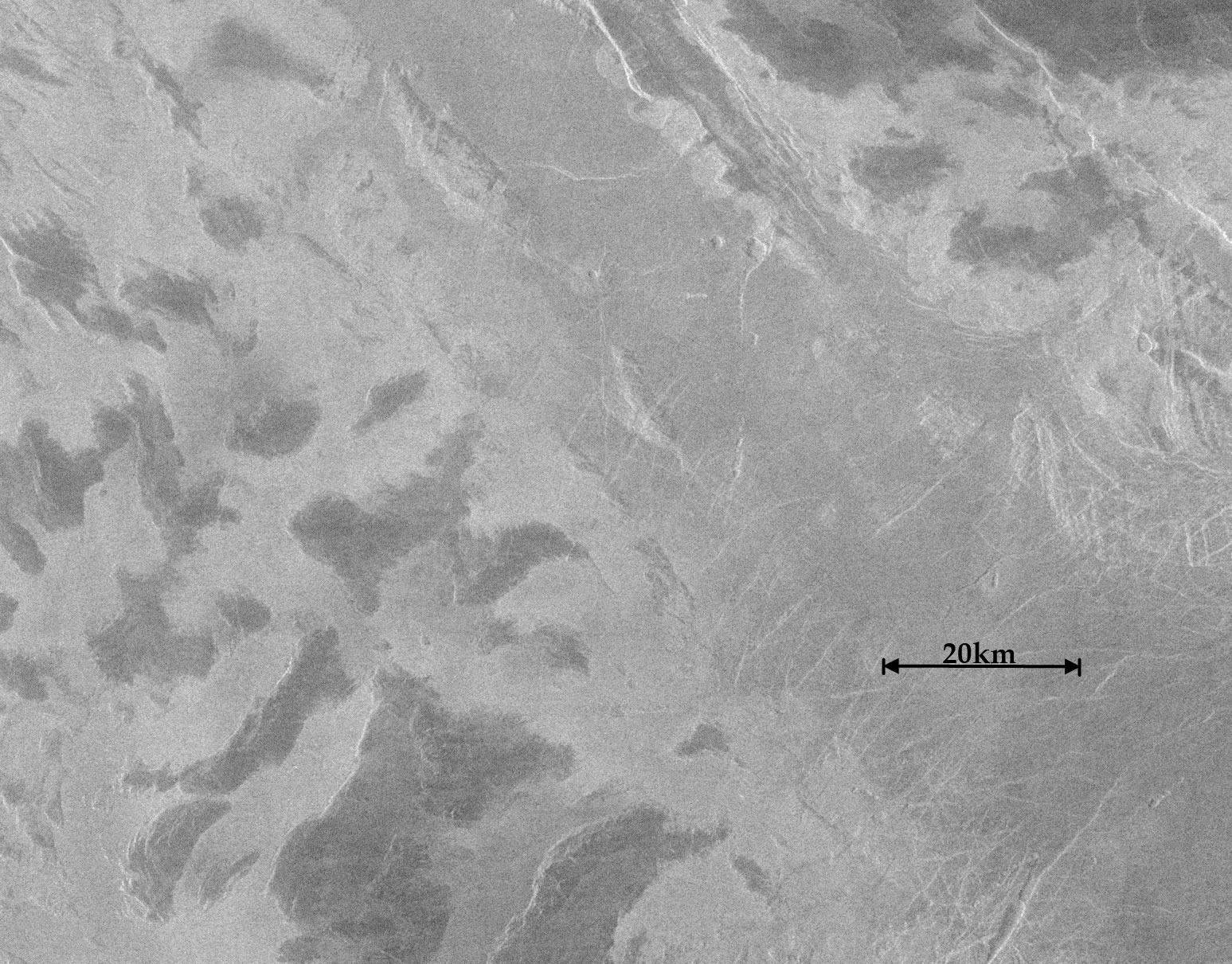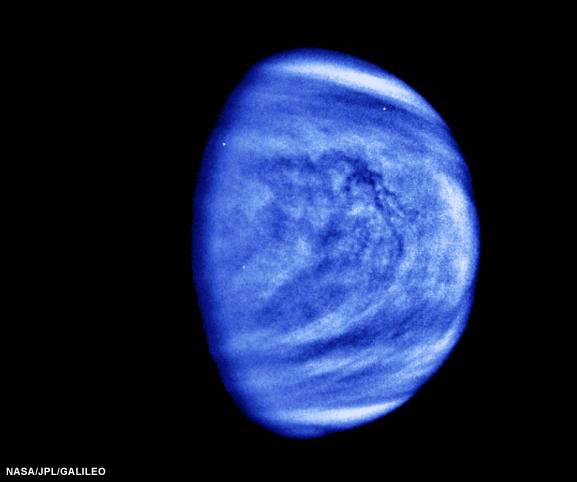Heavy-Metal Frost May Coat Mountains On Venus

Exotic metallic frost and crusts loaded with crystals might shroud the highlands and mountains of Venus, researchers say.
Venus has long been mysterious to scientists because dense clouds hide its surface. Any probes that have landed on the planet survived only a few hours before getting destroyed, because Venus is the hottest world in the solar system: Surface temperatures reach 870 degrees Fahrenheit (465 degrees Celsius), more than hot enough to melt lead.
Moreover, the atmosphere of Venus is crushing, exerting a pressure more than 90 times that of Earth's at sea level, and Venus' skies occasionally rain acid. [The 10 Weirdest Facts About Venus]
To penetrate the clouds of Venus, scientists have used spacecraft to map the planet's surface, both by looking at radio emissions that Venus gives off and by using radar to reflect radio waves off the planet. The last spacecraft to map Venus this way was NASA's Magellan probe, which orbited Venus from 1990 to 1994.
In a surprising discovery, Magellan found that radio-wave probes gave different impressions of Venus depending on the elevation of the area being examined. The highlands of Venus generally brightened with elevation, meaning they reflected radio waves well, although there were dark spots at the highest locations.
"In other words, the higher you go on Venus, the more radio-reflective the ground gets, until it abruptly goes radio-black," said Elise Harrington, an undergraduate student at Simon Fraser University in Burnaby, Canada.
Both these radio-bright and radio-dark areas have defied explanation for more than 20 years. One possible explanation depends on temparature differences on Venus: The planet's highlands are colder than its lowlands, just like on Earth. The cooler temperatures might lead to frost on Venus that looks radio-bright due to all the radio waves it reflects, just as snow on Earth reflects light and looks bright white in visible light.
Get the Space.com Newsletter
Breaking space news, the latest updates on rocket launches, skywatching events and more!
Since Venus is so hot, however, any frost on the planet could not be composed of frozen water. One possibility is that the frost is made of metallic compounds, such as coloradoite (which itself consists of mercury and tellurium) and tellurobismuthite (which is made of bismuth and tellurium). These would stay radio-bright regardless of elevation.
Another possible explanation involvs a kind of crystal in which the positive and negative electric charges are separated, making one side of the crystal positive and the opposite side negative. The properties of such crystals, known as ferroelectric materials, depend on temperature. Prior research suggested these crystals would increase in radar brightness with elevation until they reached a certain temperature, after which point they would drop precipitously in radar brightness at the highest elevations, Harrington said.
"The ferroelectric material wouldn't be a frost. It would be a mineral present in the surface rock," Harrington told Space.com.

To solve the mystery of the radio-bright and radio-dark spots on Venus, Harrington and Allan Treiman, of the Lunar and Planetary Institute in Houston, revisited Magellan data. Instead of lower-resolution radar altimetry, the researchers used recently available stereo radar elevation data from Magellan provided by geophysicist Robert Herrick at the University of Alaska at Fairbanks. This improved the resolution from patches about 5 by 7.5 miles (8 by 12 kilometers) in size to only about 2,000 by 2,000 feet (600 by 600 meters) large.
The investigators also used data from Magellan's synthetic aperture radar to look at reflected radio waves. This gave the scientists a resolution of about 250 by 250 feet (75 by 75 m) at Venus' surface, much better than coarser data based on Venus' radio emissions, which provided a resolution of about 9.3 by 14.3 miles (15 by 23 km).
The scientists re-examined two areas in the Ovda Regio highlands region of Venus. The scientists confirmed the same pattern of radar reflections brightening with increasing elevation found by previous researchers, with radar reflection low at an elevation of 7,900 feet (2,400 m) and rapidly brightening up to 14,700 feet (4,500 m). However, the researchers also found a lot more of the strange radio-dark spots at the highest elevations, about 15,400 feet (4,700 m). The scientists suggest ferroelectric crystals might explain the findings at Ovda Regio.
"The previous author saw a few dark spots," Harrington said. "But we see hundreds of them."
However, when the scientists analyzed Maxwell Montes, the tallest mountain range on Venus, it seemed to lack these radar-dark spots, even at high elevations. The researchers suggest metallic frost might explain the findings at Maxwell Montes.
Planetary scientist Erika Kohler at the University of Arkansas and her colleagues, who did not take part in this study, are currently performing lab experiments to determine what metals might make up the frost that the researchers suspect is on Maxwell Montes, Harrington said. Observations by Europe's Venus Express orbiter might shed light on this potential frost. [Amazing Venus Photos by Venus Express]
"Since this frost would be a precipitation from the atmosphere, insight from Venus Express into surface-atmosphere interactions will be highly valuable," Harrington said.
However, "we currently have no idea what type of compound would fit the data for the ferroelectric material," Harrington added. "We've done some research, but no suitable compounds have been proposed."
Still, given the high temperatures and pressures found on Venus' surface, as well as the planet's acid rains, it is not easy to test the properties of materials under Venusian conditions. This suggests it remains possible an as-yet-unknown ferroelectric crystal might explain the Ovda Regio highlands of Venus.
Harrington and Treiman, who served as Harrington's advisor, detailed their findings in October at the annual meeting of the Geological Society of America in Vancouver.
Follow us @Spacedotcom, Facebook or Google+. Originally published on Space.com.
Join our Space Forums to keep talking space on the latest missions, night sky and more! And if you have a news tip, correction or comment, let us know at: community@space.com.

Charles Q. Choi is a contributing writer for Space.com and Live Science. He covers all things human origins and astronomy as well as physics, animals and general science topics. Charles has a Master of Arts degree from the University of Missouri-Columbia, School of Journalism and a Bachelor of Arts degree from the University of South Florida. Charles has visited every continent on Earth, drinking rancid yak butter tea in Lhasa, snorkeling with sea lions in the Galapagos and even climbing an iceberg in Antarctica. Visit him at http://www.sciwriter.us









